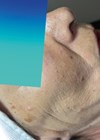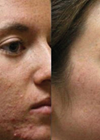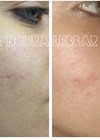
The author, an internationally recognised aesthetic dermatologist and Faculty Member for this year’s 5CC meeting in Barcelona, provides an expert guide to the use of injectable fillers in hand rejuvenation.
Ageing of the hands can result in discrepancy between a revitalised face and appearance of the hands. At a certain age, the hand tends to significantly undergo signs of volume loss, caused by multifactorial intrinsic and extrinsic factors such as smoking, high exposure level of sun and chemicals. The speed and magnitude of changes varies, as this is influenced by different factors, such as genetics, rheumatologic diseases, chronic sun exposure, smoking, alcohol abuse and overwork [1].
There are many different treatment modalities for hand rejuvenation, for the treatment of irregular pigmentation and changes in collagen and elastin fibres. This includes skin excision, lasers, sclerotherapy and the use of autologous fat and / or fillers for volumisation. To get the desired smooth and natural result in the dorsal hand, the procedure needs to be carried out by an experienced practitioner to avoid over-injection that may result in restrictions in hand motion.
Filler injection to the ageing hands resolves the issue of subcutaneous fat loss that leads to reduced volume / firmness and accentuation of veins / tendons [2]. This procedure may result in discomfort, minimum bruising and swelling. This article will discuss this particular modality of hand rejuvenation.
“It is critically important to understand that the precise positioning of nerves are different amongst individuals”
One of the consequences of ageing hands is thinning of the skin epidermis; consequently lentigines, dyschromia and textural roughness start to develop and, in some patients, seborrheic and / or actinic keratosis may also erupt. Research also shows that with time, skin laxity and thinning occurs because the quantity and quality of collagen and elastin in the dermis decreases. The simultaneous subcutaneous fat atrophy makes the underlying tendons and bony prominences more visible.
Choice of filler injection
There are different types of injectables in the market that stimulate collagen growth and proliferation. Studies show that poly-l-lactide (PLLA) results in the most extensive response; other effective injectables are calcium hydroxylapatite (CaHA) and hyaluronic acid (HA). The most frequent side-effects post-injection include transient oedema, ecchymosis, erythema and pruritus [3]. The intensity and frequency of the adverse events depends on the choice of injectables and the techniques used in performing the procedure. Research shows that PLLA may cause nodules when used in the hands, whereas, CaHA may cause more swelling compared to HA injections [4].
For successful hand rejuvenation with filler, the practitioner needs to be fully aware of the anatomy of the hand. The hand is composed of three fatty-areolar laminae which are: dorsal superficial, dorsal intermediate and dorsal deep lamina. The intermediate and deep laminar layers are separated from the lamina superficial by the dorsal superficial fascia and the dorsal intermediate fascia. Whereas the dorsal deep fascia separates the floor of the dorsal deep lamina from the dorsal interosseous muscles and the metacarpal bones. It is also essential to identify the sensory nerves and dorsal veins located within the dorsal intermediate lamina. Extensor tendons are found in the dorsal deep lamina. Fascial sheaths surround the arteries and veins running along the fascial septa [5].
It is important to be aware of the hand vasculature during injection to avoid complications. Additionally, the venous network is comprised of deep and superficial veins that follow the arteries. The dorsal venous network is located at the back of the hand [6].
The choice of filler and injection techniques both need to be considered based on an in-depth consultation with the patients and a thorough examination of the patient prior to treatment. Injectors should also keep their patients’ preferences in mind as long as they express a realistic opinion.
The procedure
There are different forms of local anaesthesia that practitioners can use prior to injection. These include topical, nerve blocks or local infiltration. Depending on the preference of the physician, commonly 1-2% lidocaine with or without adrenaline is applied. It is important to underline that the effect of topical agents is limited to the epidermis to upper dermis. Hence both the deep dermis and subdermal tissues are not anesthetised. This is why many patients feel discomfort during injection. Nerve blocks also have some disadvantages, these include patient discomfort and risk of additional bruising [7]. The efficacy of the block is significantly dependent on the expertise of the injector. Local infiltration may distort the anatomy and skew the judgement of injectors in regards to attaining optimal filling.
It is critically important to understand that the precise positioning of nerves are different amongst individuals. To reduce the risk of damage to the nerves and blood vessels I use a cannula. Additionally, it is important to avoid injecting over the tendons and bones to prevent the occurrence of surface irregularities. For this case, I prefer to use a long needle to inject into the deep subcutaneous layers. 1-1.5 inch per 2.5-3.8cm using 25-27 gauge needle. This is performed beneath the veins and skin and above the muscle. Furthermore, I use retrograde threading or fanning to avoid injecting into vessels. Immediate firm pressure is applied post-injection to minimise the possibility of haematomas and bruising. Moreover, massaging the hand after injection ensures the blend of the injected product into the empty spaces of the hands. This results in a smooth and natural final contour.
Protocol for hand rejuvenation technique
I prefer to use lidocaine only on patients who are particularly sensitive. Additionally, topical anaesthetic cream is only used minimally because it increases the possibility of under-correction. The patient is comfortably positioned with the hands beneath heart level. This position will allow injectors to clearly detect the veins on the hands. From my personal practice and involvement with my patients, keeping them comfortable during the treatment is found to positively impact the experience of both injectors and patients. Keeping patients relaxed will also allow injectors to concentrate on meticulously injecting fillers into the target areas.
Antisepsis is also important to prevent contamination prior and during the procedure, therefore the skin is thoroughly cleansed with a propriety skin disinfection solution. After cleansing, I start injecting the target points.
The first injection entry point is on the dorsal hand at the junction with the wrist proximally. Then I move through three directions with a 22 gauge cannula. I start injecting low molecular weight cross linked filler on the ulnar side. The first direction is towards the little finger, injecting retrogradely. Then I change the direction of the filler injected and I go centrally towards the middle finger. I inject retrograde slowly till I reach to the point of entry. After this, I change the direction of the injected filler towards the third direction / line which is the lateral line, towards the index finger. Usually I use one syringe per hand (1ml), however, this depends on the condition of the patients’ hand.
Then I massage the treated area thoroughly. The same process is then applied for the second hand. After this I start injecting natural hyaluronic acid into 16 points of the lamina densia which forms the dorsal skin of the hand. One syringe is used for each hand and small amounts are injected in each point, around 0.05 per entry point. This will give more thickness and give it a more hydrated and smooth appearance. After this, gentle massage will be applied to the two hands. This treatment is repeated every eight to nine months.
Patient satisfaction
In my clinic, the satisfaction of my patients for hand rejuvenation treatment using HA injections is very high. Follow- up in these patients showed that the majority were very satisfied with the results. Those who expressed decreased satisfaction about the experience, due to swelling, which lasted less than a week, were immediately gratified after using methylprednisolone to treat swelling.
Conclusion
Ageing of the hands is caused by the loss of subcutaneous tissues in the dorsum of the hands. During this stage the dorsum of the hands become skeletonised and the appearance of veins / tendons become more prominent. This causes many patients to seek hand rejuvenation treatment. The procedure of dermal fillers for hand rejuvenation is a relatively simple and effective technique. This is achieved using a biocompatible and biodegradable product. This procedure marks a high level of patient satisfaction and low rate of adverse events if done by a skilled practitioner.
References
1. Tobin DJ. Introduction to skin aging. Journal of Tissue Viability 2017;26(1):37-46.
2. Nina K, Lee W, Rina P, Anup P. The 5-step filler hand rejuvenation filling with hyaluronic acid. Plastic and Reconstructive Surgery 2019;7(1):e2073.
3. Kuhne U, Imhof M. Treatment of the ageing hand with dermal fillers. Journal of Cutaneous and Aesthetic Surgery 2012;5(3):163-9.
4. Rivkin A. Volume correction in the aging hand: role of dermal fillers. Clinical Cosmetic and Investigational Dermatology 2016;9:225-32.
5. Zhou J, Xie Y, Wang W, et al. Hand Rejuvenation by Targeted Volume Restoration of the Dorsal Fat Compartments. Aesthetic Surgery Journal 2017;38(1):92‑100.
6. Taneja C, Younus M, Howale D. The study of dorsal venous arch of hand in living adult males in Udaipur district of Rajasthan. International Journal of Current Research and Review 2012;4(5):89-99.
7. Curley J, Castillo J, Hotz J, et al. Prolonged regional nerve blockade: injectable biodegradable bupivacaine/polyester microspheres. Anesthesiology 1996;84(6):1401-10.
TAKE HOME MESSAGE
-
There are different types of injectables in the market that stimulate collagen growth and proliferation.
-
Hand rejuvenation using injectable fillers results in high patient satisfaction rates.
-
Hand rejuvenation with injectable fillers lasts for eight to nine months.
-
Filler complications are avoided with careful planning, thorough knowledge of patient’s hand anatomy and characteristics of the type of filler used.
Declaration of competing interests: None declared.
COMMENTS ARE WELCOME









